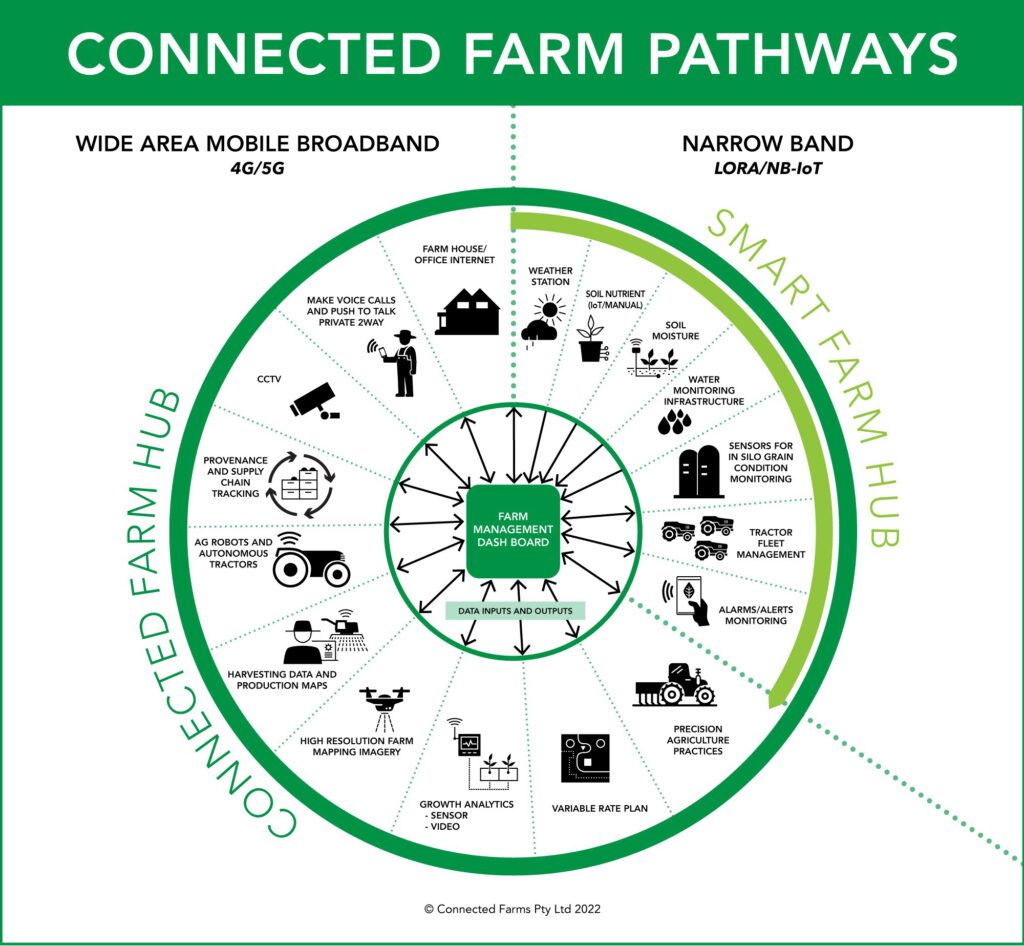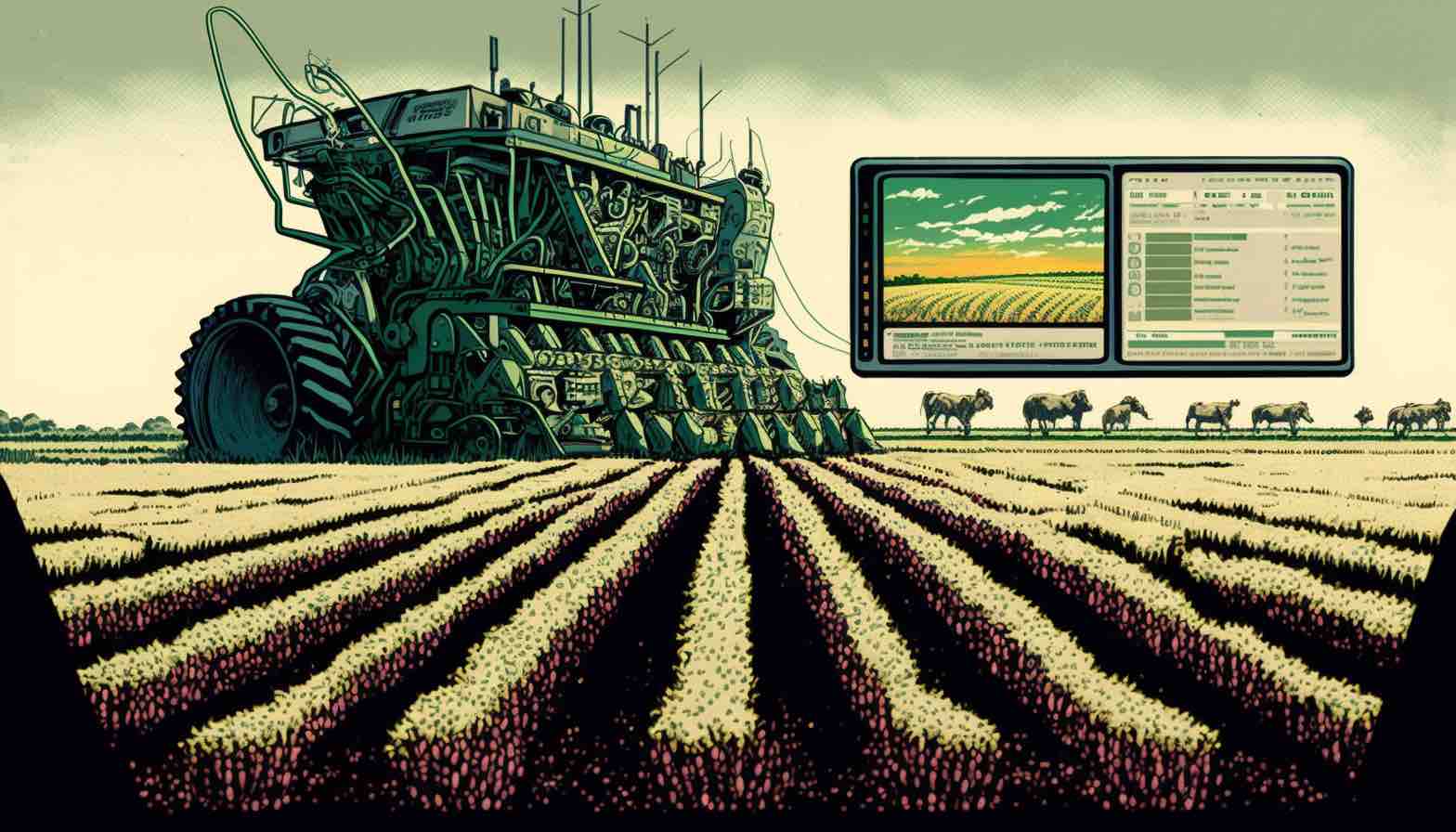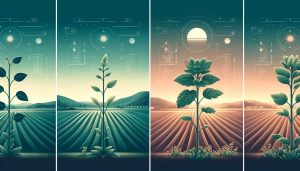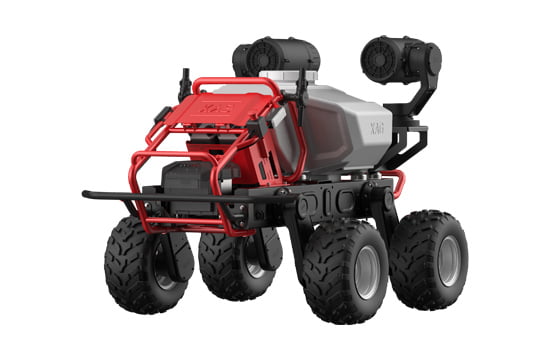As someone who grew up on a farm, I’ve always been interested in the latest farming trends and modernization. Over the years, I’ve seen farmers advance and embrace modern innovation production, using new ways to farm and adopting technologies that have revolutionized the industry.
When I took over the family farm, I found myself faced with a significant challenge. My father had always been a traditional farmer, using conventional methods and pesticides to maximize yields. However, I had become convinced that organic farming was the way to go, both for the health, environment and for the long-term sustainability of our farm.
Transitioning from conventional to organic farming was not an easy task, but I was determined to do it. I began by educating myself on the principles of organic farming and how to incorporate new technology into existing operations.
The use of technology remains a challenge: While my father and our neighbors were skeptical of new technologies, I saw their potential for improving efficiency and reducing waste – especially in the context of organic farming. Today I mainly invest into new software to streamline our operations and reduce our environmental impact.
In this article, I’ll discuss the latest farming trends in the context of modern farm machinery, with a focus on farm connectivity.
Modern Farms
Modern farms are at the forefront of technological innovation, and farming technology companies are constantly developing new products to help farmers improve their operations.
What is a modern farm? Where do I start with transitioning to a modern farm?
As a new generation farmer, I am constantly exploring ways to transition our family farm into a modern and efficient operation. Technology has advanced in agriculture. We now have access to digital tools and data that can help us improve our crop yields, and we are collaborating with researchers in the public and private sectors to do so.
But the most important step, the first step, to modernize a farm is: connectivity. Farm connectivity to the outside world, and internal connectivity across the estate. Without that crucial part of infrastructure your plans to modernize shall be doomed. Sorry for the dramatic language here.
Once set up, farmers are free to access all kind of modern technologies such as smartphone-controlled irrigation systems, ultrasounds for livestock to improve meat quality, mobile apps and cameras to monitor our livestock and crop sensors to maximise fertiliser uptake. These technologies are making our farms more efficient and productive.
Efficiency is the key to modern agriculture, and we are focusing on adopting more technologies like autonomous vehicles, artificial intelligence and machine vision to streamline our operations further. As a result, we will have access to real-time farm information, weather updates and disaster warnings, which will save us time and resources.
One such product is the XAG R150 Unmanned Ground Vehicle, the first mass-produced agricultural robotic platform designed for precision crop protection, field scouting, and on-farm material delivery. With a high-strength steel frame and roll cage, adjustable ground clearance, and a highly modular design, the XAG R150 boasts improved efficiency and productivity, cost savings, precision agriculture, and environmental benefits.
Another innovative product is the Nexus Robotics’ La Chevre, a fully autonomous weeding robot that uses cameras, AI technology, and neural networks to recognize and pull out weeds without damaging crops. The robot operates 24 hours a day and can differentiate between weeds and crops. It has RTK-gps sensors for autonomous navigation and uses multiple sensors, including cameras and depth sensors, to scan and differentiate between crops and weeds. The robot has mounted robotic arms with delta mechanisms to pull out the weeds using grippers once classified and located. The robot reduces the need for herbicide and fungicide application by up to 50%.
Farm Connectivity
Farm connectivity is crucial to modern farms, as reliable voice and data communication over the whole farm is essential for efficient and effective operations. Farm connectivity is split into narrowband and wide area mobile broadband, supporting IoT infrastructure, including data collection from sensors transmitting smaller amounts of data such as soil probes, water infrastructure monitoring, farm management devices, and lower-level robotic functions. It is ideal for capturing data from various sensors, and its small size makes it easy to install on existing infrastructure.

So basically, farm connectivity actually enables all levels of agtech and autonomous smart farming applications across the farm operation: Data usage, data-intensive robots and more intensive precision farming functions. Providing connectivity to the farmhouse, farm office, and outlying sheds on the estate.

So the very first step into the direction of a modern farm always is: connectivity. If you don’t have internet access, you will not be able to modernize your agricultural business, it means zero access to data streams and to additional education.
I always like to look at other cultures and nations, how they dealt with transitioning: One agricultural society is for sure Japan. Known for their efficiency, ageing society, and limited space in agricultural production – the Japanese must use technology to raise productivity.
Future Farmers of Japan
In Japan, there is a growing interest in innovative and sustainable farming practices. The “Future Farmers of Japan” program, initiated by the Japanese Ministry of Agriculture, Forestry, and Fisheries, aims to attract young people to the agricultural sector by introducing modern technology and innovative approaches to farming. The program provides support for young farmers to experiment with new techniques and to develop business models that are profitable and sustainable. In addition, there has been an increase in the adoption of precision agriculture technologies, such as drones, sensors, and autonomous machinery, to help farmers optimize their operations.
The “Future Farmers of Japan” program has been instrumental in introducing modern technology and innovative approaches to farming in Japan. Established in 1950, the program aims to attract young people to the agricultural sector by providing support for young farmers to experiment with new techniques and to develop business models that are profitable and sustainable. The program has been successful in promoting leadership, social character, and scientific character among students of vocational agriculture in Japan. With the increasing adoption of precision agriculture technologies, the Future Farmers of Japan program is likely to continue to play a key role in driving innovation in the Japanese agriculture industry.
Special case Japan: The importance of “Fertigation”
Japan is facing significant challenges in terms of agricultural sustainability, particularly with the forecasted water shortages by 2030. In response to this, the country has developed a digital farming technology that utilizes IoT and AI to collect and analyze data from farming practices and the surrounding environment.
Experienced farmers in Japan have a vast knowledge base and know-how that enables them to use water and fertilizers more efficiently, which has become essential for sustainable agriculture. By turning this knowledge into data, even inexperienced growers can implement efficient techniques and improve their agricultural productivity, even in areas with limited access to water.
The technology focuses on “fertigation,” an agricultural technique that was created in Israel to address severe water shortages. By placing drops of water and fertilizer at the roots of crops instead of spraying a large amount of water, fertigation can minimize the amount required to keep the soil in proper condition.
The digital farming technology has been tested and found to be highly efficient and inexpensive. Its implementation is expected to bring a significant change to the future of sustainable agriculture in Japan, and the technologies are already beginning to spread to other parts of Asia. These advancements in agriculture are crucial for the future of Japan’s food production and the country’s ability to sustainably provide for future generations.
The other interesting nation is for sure India, which is a full-throttle agriculture transition mode. Japan and India are both examples of countries that are embracing modernization and driving innovation in the agriculture industry, making them key players in the global market.
New trends in agriculture in India
Turning our attention to India, the agriculture industry is the backbone of the country’s economy. With a growing population and increasing demand for food, the sector has been undergoing significant changes to keep up with demand. The Green Revolution, which began in the 1960s, led to an increase in food grain production, while the diversification of crops has helped to improve soil fertility and quality. In recent years, there has been a growing trend in horticulture due to India’s soil conditions and textures, with floriculture contributing INR 266 billion to the Indian economy.
Agriculture is a crucial industry for India, providing livelihoods to 50-60% of the population and contributing 16% of the country’s GDP. However, the agriculture sector faces significant challenges, such as unpredictable monsoons, population growth, and insufficient irrigation systems, which negatively affect crop yields. To modernize the agriculture industry and address these issues, it is essential to utilize internet-based technologies to discover innovative ways to increase crop yields and overcome obstacles.
One of the key solutions is to educate farmers on new farming practices and techniques. In many cases, farmers in India still rely on outdated and traditional methods that lead to resource depletion, crop damage, and over-farming. It is critical to provide farmers with modern and efficient farming practices that can sustainably increase crop yields and support their livelihoods.
In addition to education, employing modern technologies such as unmanned aerial vehicles (UAVs) can also help farmers locate suitable soil for crop growth. Smart irrigation systems, mechanized equipment, and pest control measures are also valuable tools to improve crop yields. To evaluate the performance of the crops, remote sensors can be used to measure various parameters such as humidity, air temperature, and soil quality.
In addition to these traditional farming practices, recent innovations in agricultural technology in India have been driving change in the industry. Precision farming, crop sensors, autonomous tractors, and drones are some of the new technologies being adopted by farmers to increase efficiency and productivity. Startups are also driving innovation in agriculture using technology like the Internet of Things (IoT), Artificial Intelligence (AI), and machine learning. The impact of technology on Indian agriculture has been significant, making farming more efficient and productive, reducing waste, and optimizing crop yields. These advancements are also contributing to India’s economy and food security.
The agriculture industry is evolving rapidly, and farmers must adapt to stay competitive. Embracing modern farming practices, such as the use of innovative technology and sustainable practices, can help increase efficiency, productivity, and profitability while reducing environmental impact. With the help of advancements in farm connectivity and modernization, farmers can take advantage of new opportunities and push the boundaries of what is possible in agriculture.
I hope you like my little excursion, thanks for reading!

















